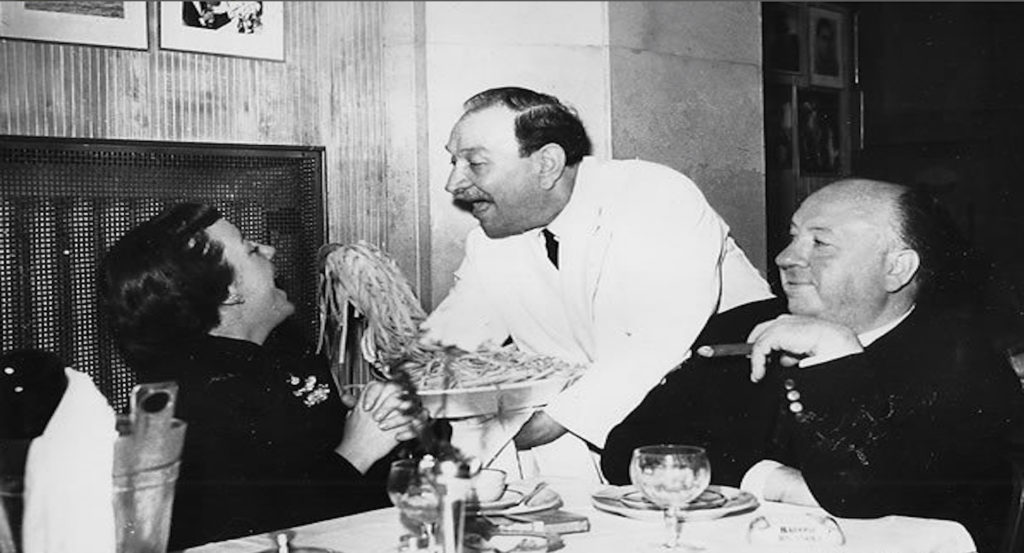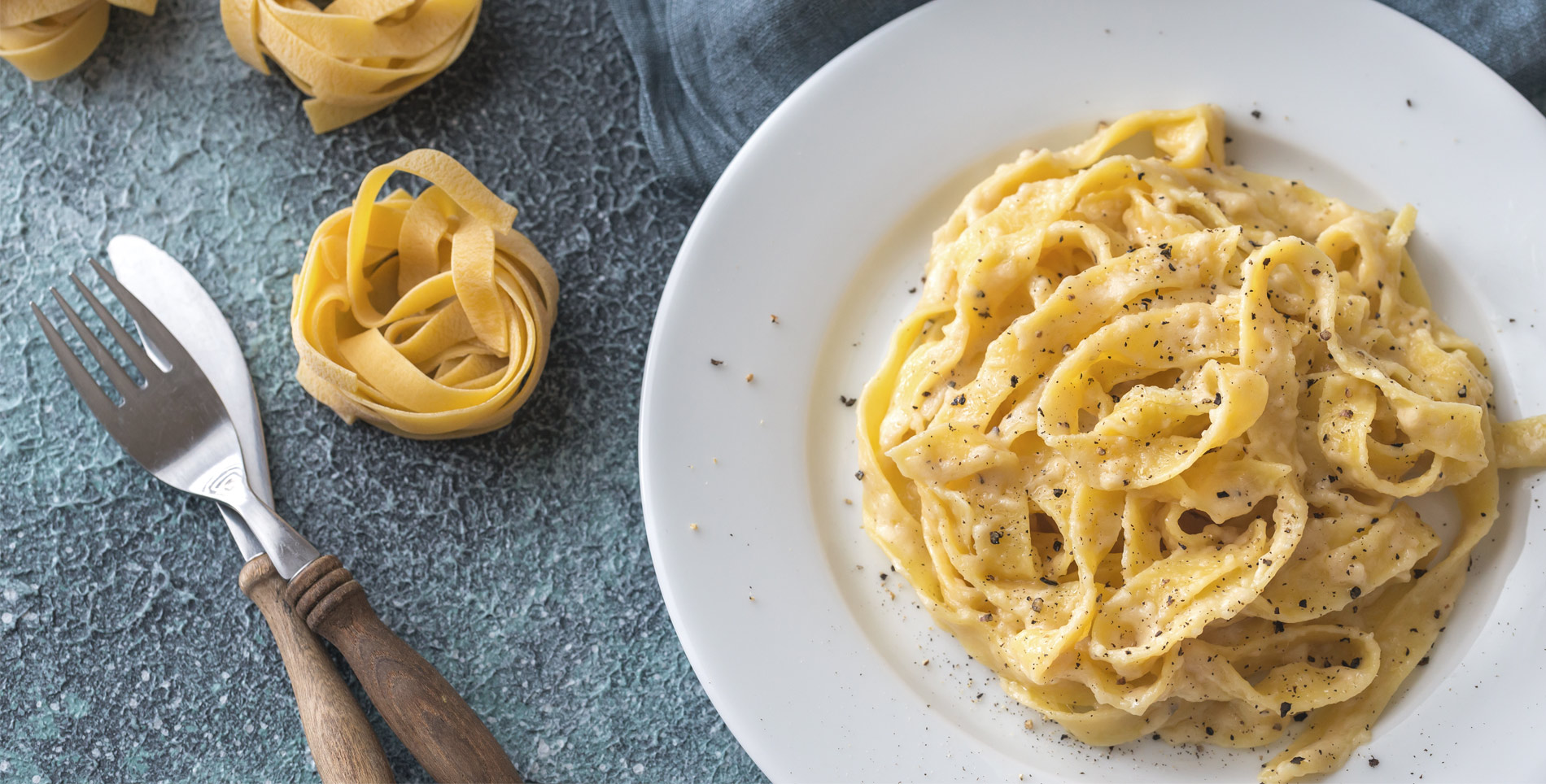The place is Gabrielle’s Restaurant in Orange, Connecticut. The year, circa 1991. My sister and I are tearing our away at our second basket of crusty Italian bread wrapped in a salmon pink linen on the center of the table. We’ve already gone through our allocation and moved onto the one meant for the other end of the table, where our grandparents, aunts and uncles are seated.
“You still have to eat dinner,” my mom is telling us. But, being the born and bred carb-loving kids that we are, that really isn’t much of a concern and she probably knows it. After all, this isn’t our first rodeo at the old ristorante Gabrielle.
We’d been going to Gabrielle’s for years as a family by this point. For brunches and dinners. For Mother’s Days and anniversaries. It wasn’t just bread, sliced thick and served with pats of butter that we all applied blissfully ignorant of phrases like “grass-fed” or “heirloom grain,” that made us do a little dinner-time happy dance. We also loved the fried calamari the grown-ups ordered, wincing a little when they first told us what it was we were eating, but happy as clams to dive into the squid when it arrived fried and crispy, served with a side of marinara like little oceanic onion rings.
But that was all just a prelude to the main event. One entrée was a standing order for both my sister and me. It was what filled my head with creamy, buttery daydreams the moment someone mentioned an impending dinner at Gabrielle’s. We never looked at the menu, because there was never, ever any question what was coming.
——
The place is Rome, Italy. The year, circa 1914. A local cook named Alfredo is trying to create something his pregnant wife will enjoy. He reaches for a few familiar, readily available ingredients. His notion is a simple one, but how could he possibly go wrong with a combination of noodles, butter and cheese?
This is the legend of how Alfredo Di Lelio wound up lending his name to the Italian culinary hall of fame. Fettuccine Alfredo. The dish he came up with was made with butter and parmigiano—though no cream, which is an element it is rarely seen without these days. In classic Italian cooking, cream rarely appears in central to southern parts of the Peninsula, mostly a luxury ingredient specific to northern regions with colder climates.
Although Di Lelio is given the credit, in actuality it was a likely evolution of pasta al burro—or buttered pasta—con parmigiano. A recipe for something similar exists as far back as the 1400s, when perhaps the earth’s first celebrity chef, Maestro Martino da Como, included instructions for that dish in his book, Libro de Arte Coquinaria (The Art of Cooking). Di Lelio’s interpretation five centuries later may have been sans panna (cream), but it was al triplo burro (triple the butter), and an apparent hit at home.
Ultimately, it made it onto the menu at his Roman ristorante, Alfredo alla Scrofa in Piazza Augusto, and found an audience far beyond his own wife’s plate. Of course, social media wasn’t a thing in those days, but part of the popularity actually came on account of the Instagram antecedent—diners’ word of mouth. In this case, some very influential diners. First, Hollywood power couple Mary Pickford and Douglas Fairbanks dined on Alfredo’s noodles during their Roman honeymoon and raved about it all the way back on the American West Coast. Then, George Rector, the food critic for the Saturday Evening Post, traveled to Rome, tasted Alfredo’s preparation, and dished about it to hungry readers back in the States.
Talk about influencers.

Naturally, we Americans couldn’t leave well enough alone, and always seem to want to add to just about everything. So eventually, when Alfredo’s preparation made its way across the Atlantic, someone thought extra butter just wasn’t enough. How about some cream?
By most accounts, prior to the 1960s, Alfredo’s fettuccine was known as much for its flavor as its reputation as a tableside spectacle. Servers would whip up the cheese and butter together, emulsifying it with the noodles and residual pasta water—much the way cacio e pepe is prepared—right before diners’ eyes.
But as anyone who has attempted to make cacio e pepe according to that traditional method can attest, that wouldn’t have been all that convenient for the home cook to attempt. So it may not be a surprise that the earliest evidence of the creamy twist came when The Pennsylvania Dutch Noodle Company published a recipe on the package of dried fettuccine, perfect timing for the convenience food era homemakers who were being exposed to and inspired by more exotic dishes, but wanted to have impressive meals they could easily pull off for their families. The new recipe would have produced a satisfying interpretation with a lot less fuss.
So, although the dish did originate in Rome, what graces modern Italian food menus would be foreign to Di Lelio and his Lazio-born brethren. Today, American restaurants often even further complicate the recipe and its derivatives. The Olive Garden has published instructions on its website that include both milk and heavy cream, two kinds of grated cheese, and flour. Ironically, this sort of thing is intended to make it simpler to execute at scale and at home, with ingredients like flour to thicken and stabilize (also of note, The OG has added to the menu “Chicken Alfredo Pizza Frittata,” which appears to be some kind of calzone. As well as “Spicy Alfredo Chicken,” described as “lightly breaded and fried chicken tenders tossed in a spicy alfredo sauce”—one wonders whether the liberties taken with his name may have Signore Di Lelio rolling in his grave).
Nutmeg is also a common addition in modern executions, as are pepper and/or garlic; sometimes lemon makes an appearance, and certain versions even call upon egg yolk for an extra creamy, luxurious element to the already decadent sauce.
But for me, regardless of history or origin, my memories of Alfredo are all perfect ones, whether at Gabrielle’s, buried under a heap of dried green parsley, in my grandmother’s kitchen made with her own fresh fettuccine noodles, in Rome where tourist bait ristoranti happily serve the Americanized iteration in exchange for a few Euro—and yes, even at The Olive Garden. All of which are probably a far cry from what its namesake imagined, but all are a study in how a few simple ingredients and a little bit of love as inspiration can create a global legacy—one which I, for one, feel no guilt about taking pleasure in.







Our comments section is for members only.
Join today to gain exclusive access.